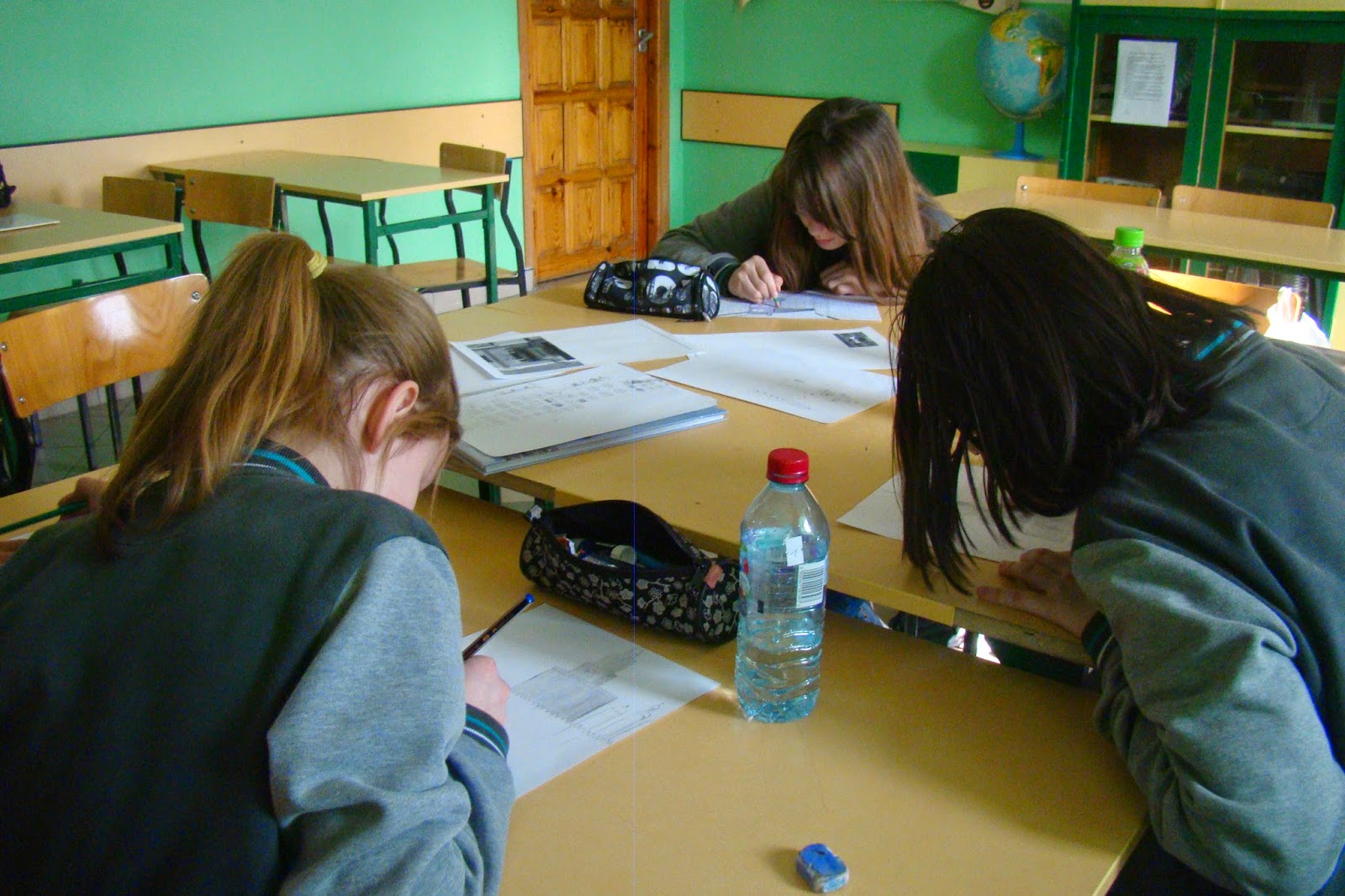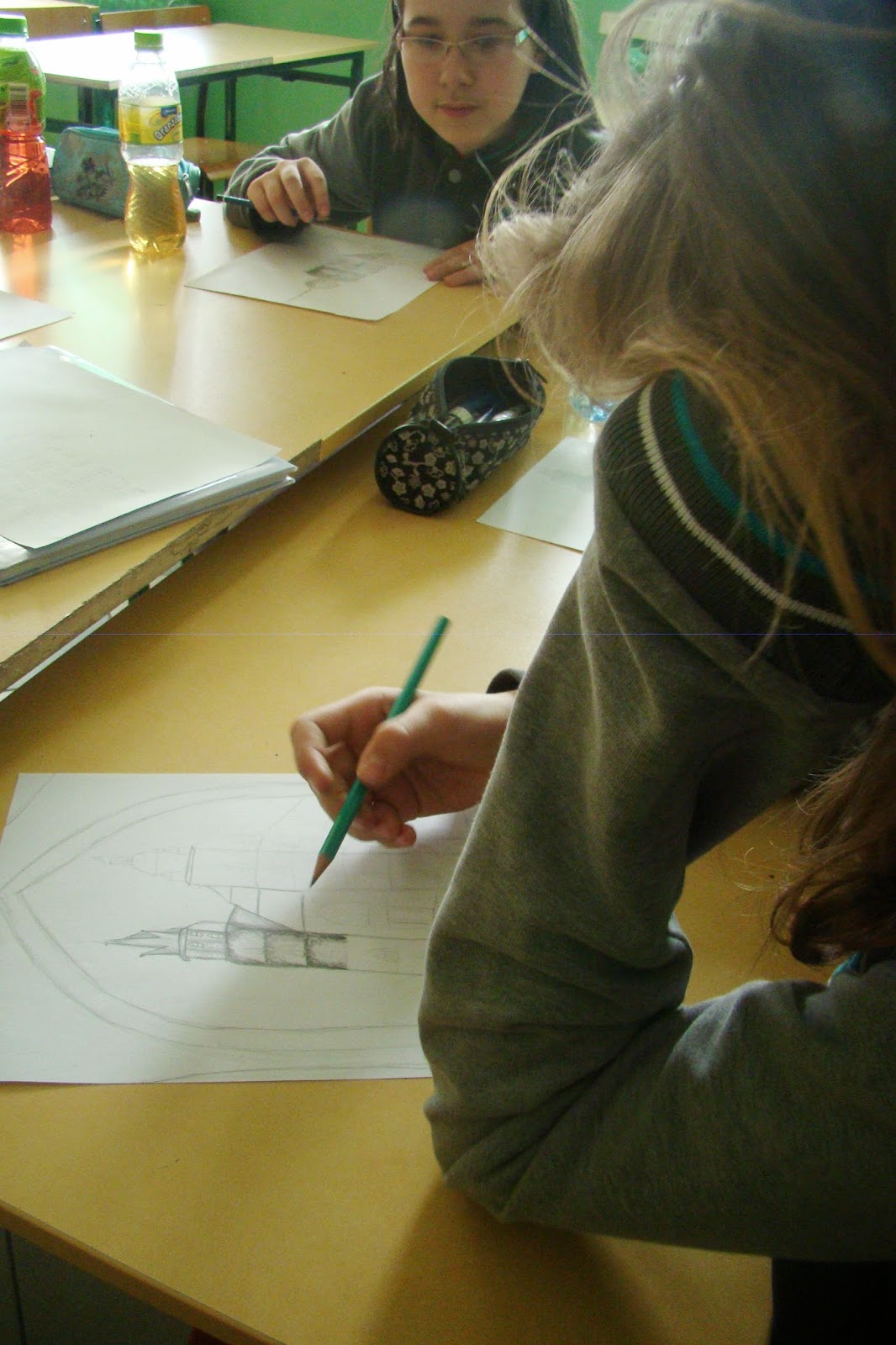To find more about Cracow click the link below:
http://www.poland.travel/en/unesco-sites/historic-center-of-krakow-27
"The Old Town together with the Wawel Hill and the Kazimierz district are
on the UNESCO World Heritage List. The Medieval urban layout of the Old
Town has not changed for centuries. Every visitor to Cracow
should see Europe’s largest Medieval market square with its Cloth Hall,
the Church of the Holy Mary with its Gothic pentaptych altarpiece
carved from limewood, Wawel
Hill and its royal castle and the Wawel cathedral with its outstanding
Renaissance chapel, the Medieval university building of Collegium Maius
with its unique collection of astronomical instruments, the Barbican,
and St Florian's Gate"
 |
| Julia Wasilewska 5d |
"Poznan - The Old
Market Square is among the most interesting places to see in Poznan.
The Renaissance town hall, old houses, charming side streets, numerous
museums, monuments, cafes and people walking about - all of them create
the unique atmosphere of the place. The Old Market Square is the heart
of Poznan.
Marked out in
1253, when the city of Poznan was chartered, the market square has been
the centre of community life for centuries. It was in the town hall
that the city councils took decisions about local affairs. And it was
in the market square that the most prominent citizens lived and trade
deals were negotiated to bring economic prosperity to the city."
 |
| Karolina Soćko 5d |
"Poznan - The
Renaissance town hall - formerly the seat of municipal authorities. The
building rebuilt in the mid-16th century by the Italian Giovanni
Battista di Quadro of Lugano... [Anna Plenzler; Historic monuments in
Poznan; Poznan 2007]
The
Renaissance town hall - formerly the seat of municipal authorities. The
building rebuilt in the mid-16th century by the Italian Giovanni
Battista di Quadro of Lugano now houses the Historical Museum of the
City of Poznan. Indoors, of particular beauty is the Great Hall known as
the Renaissance Room, one of the finest Renaissance interiors in Poland
– two sandstone pillars support a vault with coffers containing
polychromic sculptures representing coats of arms, biblical and
mythological scenes, exotic animals and planets. And on the town hall
tower, every day at high noon two goats, the symbol of Poznan, clash
heads. [Anna Plenzler; Historic monuments in Poznan; Poznan 2007]"
 |
| Milena Mościcka 5d |
"Welcome to Warsaw, the capital of Poland, a city worth seeing, which
will captivate you with its own, distinctive atmosphere. It is worth
staying there for a few days.
Warsaw is a unique city, located in the center of Europe, at the
junction of the trade roads from the West to the East and from the North
to the South of the continent. You will be truly fascinated by the
history and atmosphere of this magnificent city, which combines the
influences of Western and Eastern Europe, and where tradition meets
modernity. Warsaw will surely enchant you.
We invite you to get to know this city full of contrasts, where
historical monuments and modern architecture coexist in every street.
Historical palaces, buildings and architectural complexes, destroyed
during World War II, were reconstructed with such faith that it is
impossible to distinguish the originals from their authentic
counterparts. The typically-urban construction is immerged in open
spaces of green squares and municipal parks.
We encourage you to visit this European vibrant metropolis. You will
bring back unforgettable memories from there. And to those who will
decide to stay a bit longer in this city, Warsaw will surely give more
than one chance."
 |
| Patrycja Przesmycka 5d |
 |
| Urszula Czyżewska 5d |
How did the sketches appear?
Photos by Milena Mościcka Y 5d









No comments:
Post a Comment